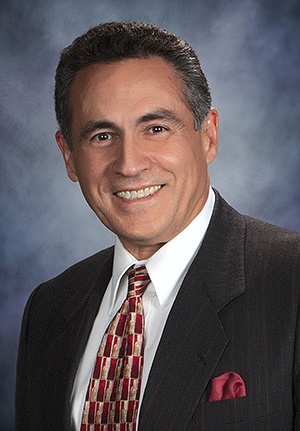
School BUSRide spoke with Daniel A. Domenech, executive director of the American Association of School Administrators (AASA). Domenech has served in his position since 2008, and has more than 36 years of experience in public education.
Domenech spoke about the AASA’s top 2022 priorities, the connections between administrators and the transportation department, and the all-new Electric School Bus Collaborative.

From a superintendent’s perspective, what are your thoughts on the “new normal” of post-COVID operations?
There are many issues involved with that question. The biggest concern superintendents have is the ability to have the kids in school in person, in what amounts to a safe environment. And that has been the challenge throughout this pandemic, because there’s been so much controversy on both sides of the issue. For example, when schools were shutting down, working parents were very upset because they wanted the kids in school. When schools started opening, parents were then upset because they didn’t want to send kids to schools, which they thought was an unsafe environment.
Then we got into the issue of wearing masks. Parents were upset when their kids were forced to wear masks. They thought their little children would choke. And then when there was a talk about doing away with masks parents were upset again, because they didn’t think their kids would be safe in the environment where kids were not wearing masks. Those concerns cascaded down to vaccines.
The number one concern on the part of superintendents is the safety of their students. How can they be safe? And they’re being told by the scientists that being vaccinated and wearing a mask is critical to those safety factors.
And, of course, transportation falls in that category of safety. They want the children to be transported to school safely, and there were issues in terms of how many kids could be on a bus at the same time. Should the students on the bus have to wear masks? So, all these issues made for some incredible challenges for superintendents over the last two years. And there is no indication that things are going to get any better anytime soon.
Unfortunately, this has resulted in a huge exodus of superintendents from the industry. This concerns us, because we’re seeing a growing leadership gap here as many experienced superintendents – who had no intentions of leaving the profession – are gone because of threats levied against their family and their children in school. Many of them are just walking away from the job.
Now that you have the opportunity to speak directly to transportation directors, how can they help make superintendents’ jobs easier?
First, I’d like to thank them for the job that they do. We understand how difficult the job is for everyone, but we certainly want to thank our transportation directors for what they do, because it’s so important and critical to the operation of the system. Getting children back and forth to school safely, and on time, is so important. We certainly appreciate that. I realize how key and how important the transportation operation is, as well as difficulties presented by the driver shortage.
Even before the pandemic, we had issues with driver shortages, and it makes the daily tasks of transportation directors that much more difficult. We want to help solve that problem, because the importance of transportation being effective, efficient, safe, and on time is critical for superintendents.
What do you see as the top priorities for members of your organization as we exit this school year and begin a new one?
The Electric School Bus Collaborative, which we formed with NAPT and ASBO, is such an important initiative because of the increased industry push for electric vehicles.
We’re so happy to partner with you in this program, because from our perspective, we’re focusing on an efficient and perhaps cost-reducing method of transportation that is safe for kids and drivers.
And the driver shortage continues to be a problem we must rectify. Obviously the first thing that would occur to anyone is higher pay, and better benefits overall. We are looking at all those as potential ways to help bring jobs to the education sector, including bus drivers.
What do you wish the public knew more about our industry?
Looking back at the early days of COVID – one of the biggest problems we had was feeding kids throughout the shutdowns. I heard of so many districts where bus drivers were delivering meals to kids in need. Feeding kids that would otherwise go hungry is such a critical service, and more people should know about bus drivers’ role in doing so.
There were also communities were buses acted as mobile Wi-Fi and cellular service providers to certain communities and neighborhoods. Both of those stories are perhaps not known by the general public, but they are certainly commendable. We must commend our drivers for pitching in to help kids in need during a national crisis.


